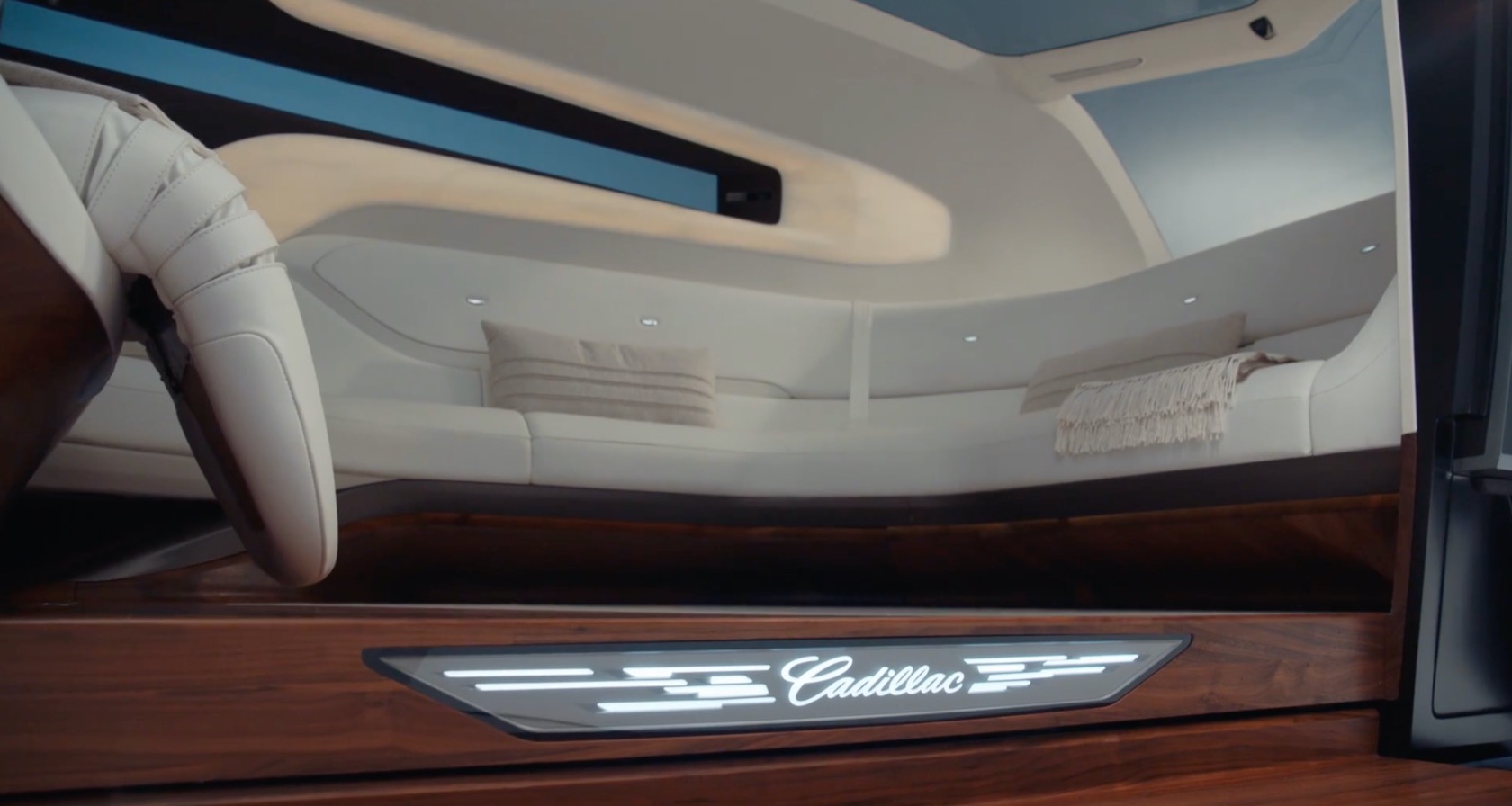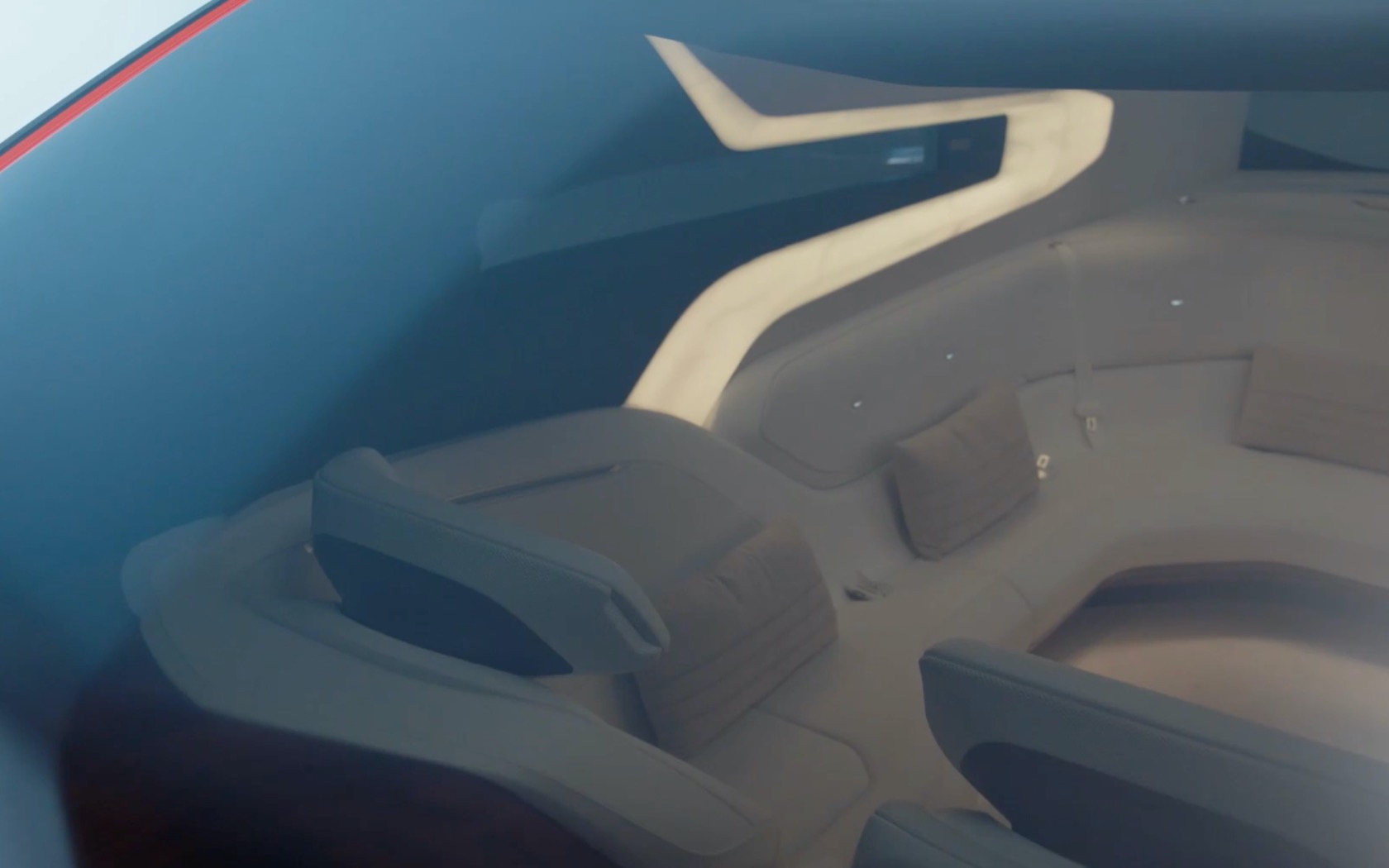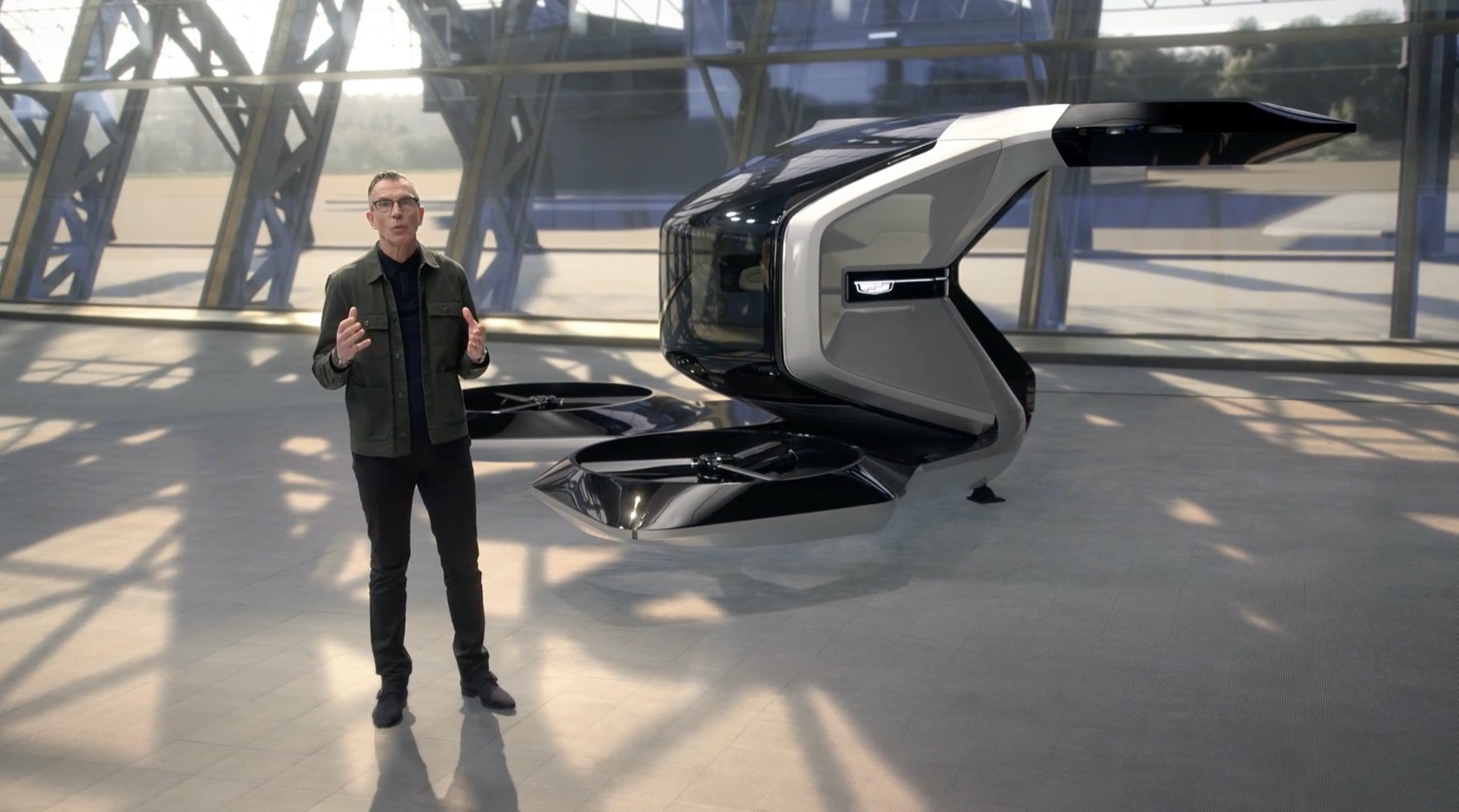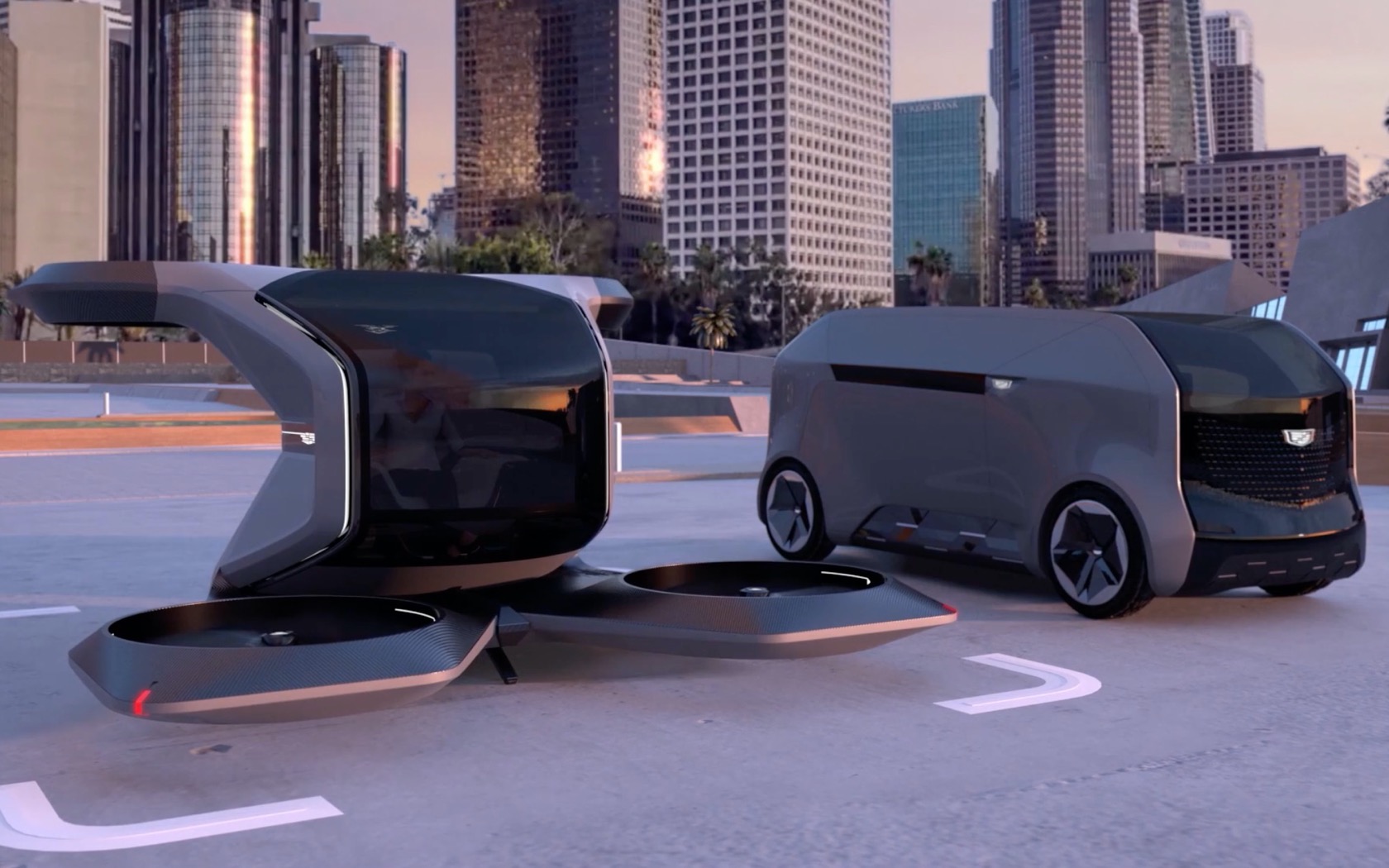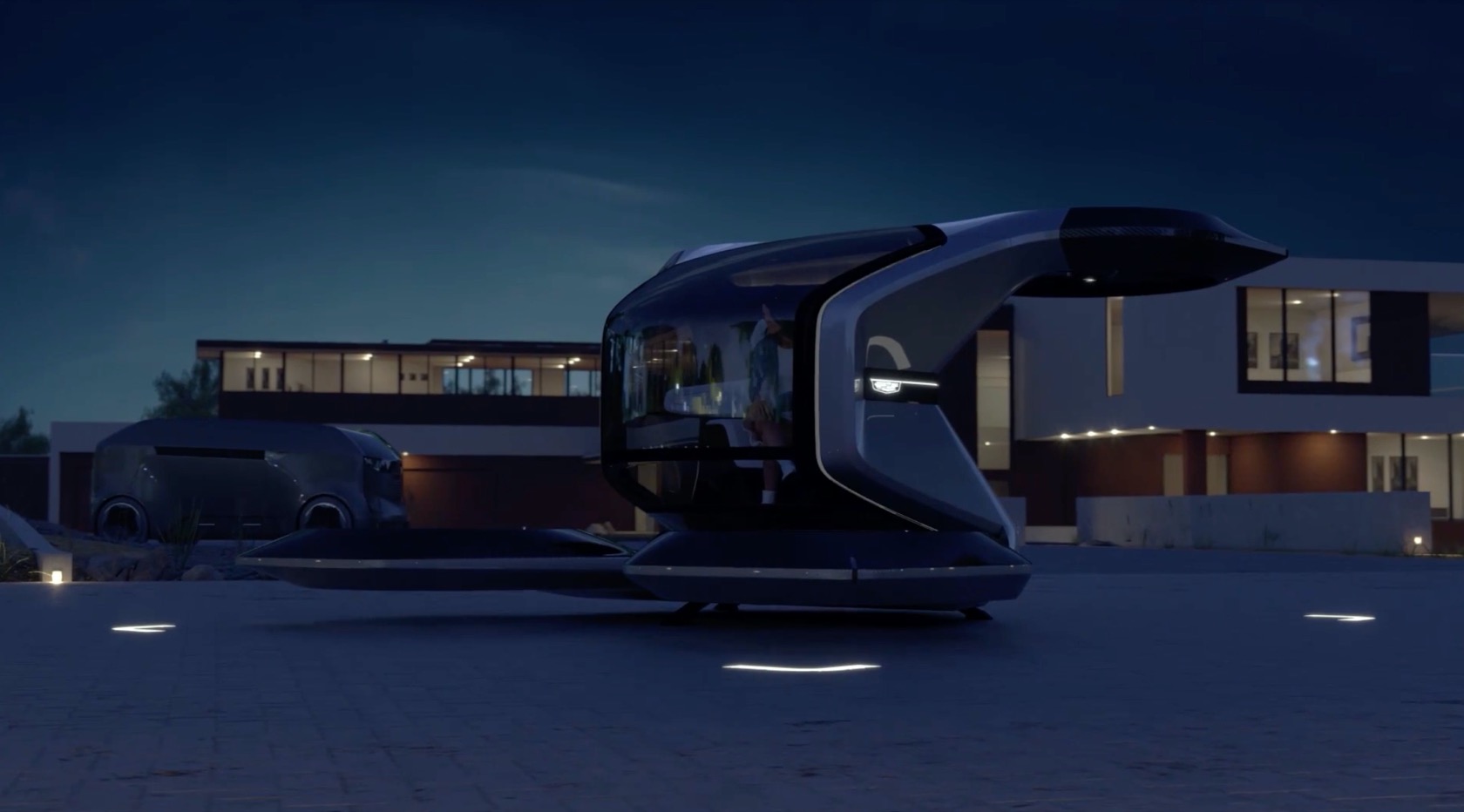Cadillac Flying Car And Autonomous Pod Concepts Hint At Electric Roadmap
Cadillac may have its Celestiq hyper-luxury EV in mind for the near future, but two new concepts – an autonomous lounge pod and a flying car – at CES 2021 today show it's looking further ahead in electrification, too. The Cadillac Personal Autonomous Vehicle and Cadillac Vertical Take-off and Landing (VTOL) Personal Drone aren't exactly close to a commercial launch, but they're part of the automaker's vision of how even those who don't want to drive an electric car themselves may still find some EV in their future.
Of the two, the PAV is the more feasible. Looking a little like Cruise's Origin autonomous pod, only with Cadillac design cues and a slick three-part door on one side, it does away with manual driving controls altogether in favor of a computer being in charge.
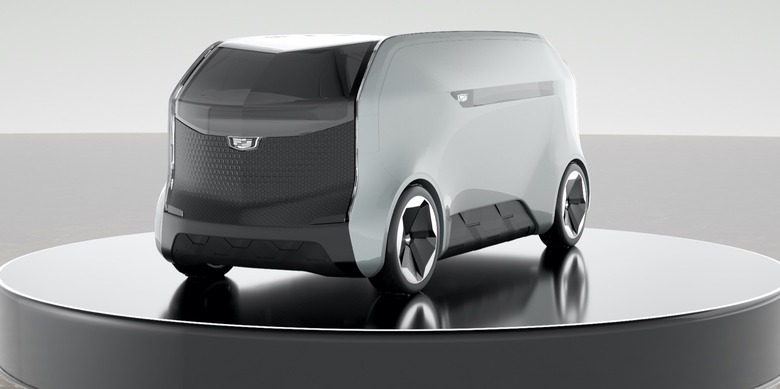
The result, Cadillac says, is "a mobile living room configured for maximum comfort and enhanced customer experience." The interior is more like a lounge than a vehicle cabin, with a swathe of seating along three sides, recliner seats, and scatter cushions, all below a full glass roof. Cadillac says that the technology would be accessed by biometrics, such as voice or gesture control to adjust temperature and audio, but that an onboard AI would also be able to take into account things like body temperature to adjust settings proactively.
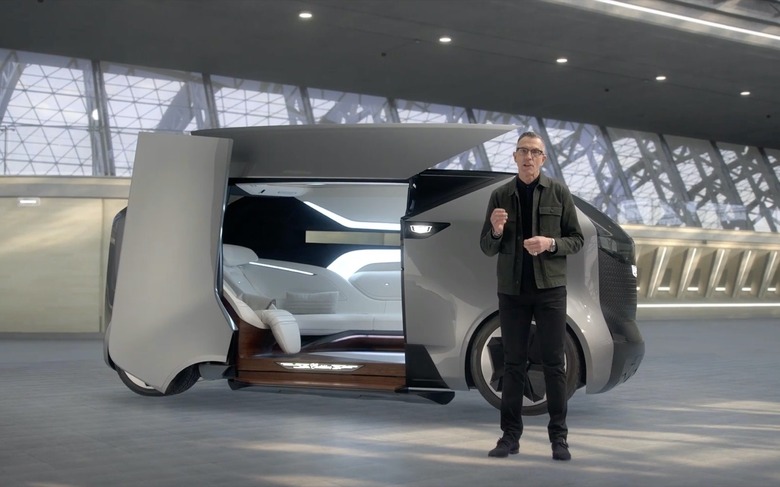
The Cadillac VTOL Personal Drone, meanwhile, is a little more far-fetched. It, the automaker says, is intended to "preview a vision of the future where personal air travel is possible."
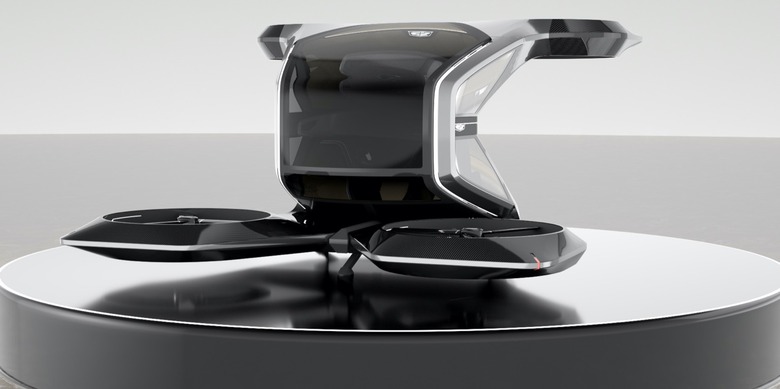
Flight control would also be autonomous, meaning passengers – of which there's space for just one inside – wouldn't need to have training in order to use the VTOL Personal Drone. Instead, they'd summon it to the top of their building and then fly to the nearest VTOL-compatible landing area, potentially meeting up with a PAV to complete the rest of the journey.
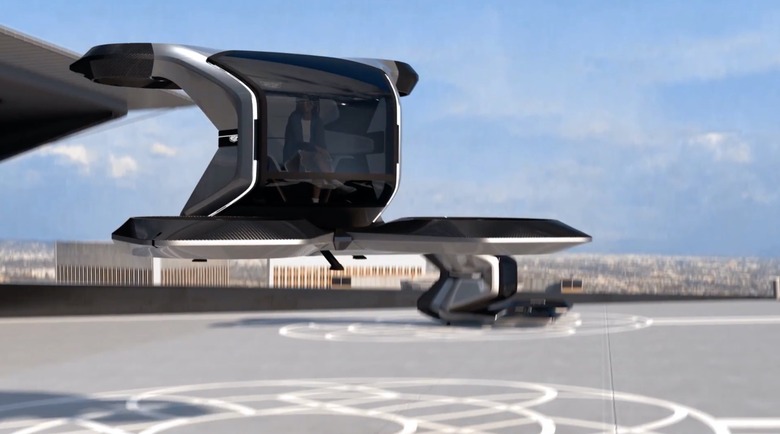
As it's a concept, full details are in short supply. Still, Cadillac says it could be powered by a 90 kWh battery, driving four rotors that would allow it to take off and land vertically, as well as fly horizontally. With a battery of that size, range wouldn't be significant, and Cadillac is envisaging a maximum speed of around 56 mph. Still, that would likely be a lot faster than trying to take a cab across a dense urban environment.
GM's goal here, according to Michael Simcoe, VP of Global Design at the automaker, isn't just to flex its design chops. Instead, it's eager to show how electrification will affect more than just vehicles you go to a Cadillac dealership – or, indeed, a Chevrolet, GMC, Buick, or other GM group dealer – to buy or lease as an individual. They're the first of a number of concepts the automaker has in mind, as part of the Cadillac Halo Portfolio, with another two-seater teased for reveal soon.
Cadillac isn't saying whether that means production plans are on the cards, or if this is more about generating ideas. Still, with autonomous technology being developed over at Cruise AV, and Ultium promising flexible electrification across a wide variety of vehicle styles, the idea of a Cadillac PAV at least isn't entirely out of left field. Indeed, it could offer a more luxurious option alongside Cruise's Origin, for those willing to spend a little more to travel in style.

